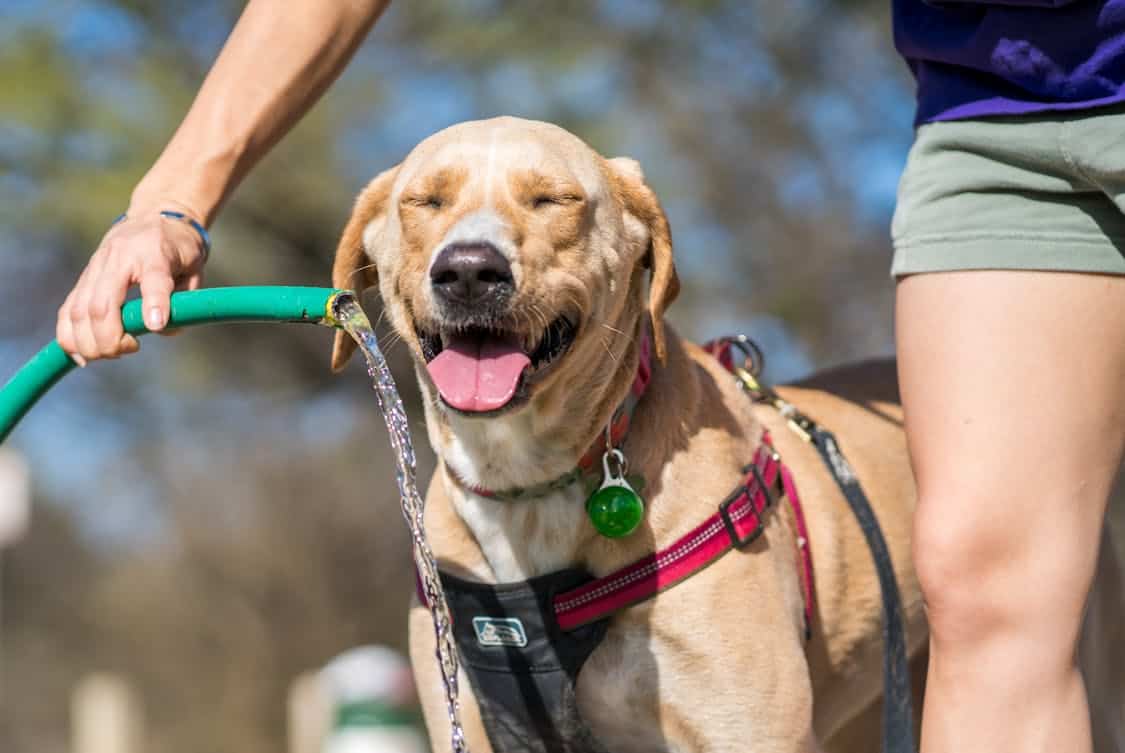Pet health shifts with the seasons, and routine care keeps animals comfortable and resilient through hot days and cold nights. A steady plan that matches weather, activity level, and life stage helps prevent common problems and keeps veterinary visits simpler.
Small moves made early often pay off big later, so a bit of prep saves hassle when conditions change. Mix common sense with timely action, and your companion will thank you with good behavior and steady energy.
Spring: Renewal and Allergy Management
Spring brings new growth that can trigger sneezes, itchy skin, and watery eyes in sensitive pets. Owners should ramp up grooming to remove pollen and seed pods from fur, and wipe paw pads after walks to reduce irritants tracked indoors.
Watch for increased scratching, ear redness, or skin sores that signal an allergic reaction or secondary infection needing care. Regular baths with gentle shampoo and a vet-recommended antihistamine plan can calm symptoms and restore comfort.
Summer: Heat, Hydration, and Activity
High temperatures raise the risk of heat stress and dehydration, so access to cool, fresh water is nonnegotiable during long walks or play sessions. Exercise in early morning or late evening, when pavement is cooler, and use shaded breaks to avoid overheating and burned paw pads.
Know signs of heat stroke such as rapid panting, wobbliness, or collapse, and cool your pet slowly with lukewarm water while getting urgent medical help. Flea and tick prevention is vital now, since parasites thrive in warm months and jump on hosts fast.
Fall: Shedding, Parasites, and Joint Care
As leaves fall, many pets begin a seasonal coat change that can clog vacuum filters and create tangles if not handled with regular brushing. Continue parasite prevention because ticks remain active in mild weather and can transmit serious infections through a single bite.
Cooler mornings and rougher terrain can highlight stiffness in older animals, so gentle stretching and low-impact play help keep joints limber. Keep bedding dry and clean to avoid skin irritation and fungal overgrowth where damp leaves collect.
Winter: Cold, Shelter, and Indoor Risks
Cold brings risks of hypothermia for small or short-haired pets and frostbite on extremities, so limit exposure and provide insulated shelter for outdoor animals. Indoor living increases close contact with household hazards like antifreeze spills and holiday plants that are poisonous, so stow chemicals and decorative greens out of reach.
Exercise remains important; use indoor games and scent work to keep mind and body active during short days. Monitor weight closely since metabolic needs can shift and extra fat hides muscle loss until mobility falters.
Vaccinations and Parasite Schedule
Keep vaccine timing on a steady calendar tied to life stage and local disease risk, and update records after each visit so there is no guessing later. Parasite prevention should match regional threats: heartworm protection, flea control, and tick measures must be current for peak seasons.
A Pet care plan is a great way to manage your animal’s routine health needs without the surprise of unexpected bills. These plans typically cover essentials like vaccinations, flea and worming treatments, and regular health checks.
They’re not insurance, but they work hand-in-hand with it to prevent problems before they start. Many vets now offer monthly pet care plans tailored by breed, age, and lifestyle.
Nutrition and Hydration Shifts by Season

Energy needs change with activity and temperature, so tweak portions rather than making abrupt diet swaps that can upset digestion. Offer fresh water often and place multiple bowls in larger homes so pets do not have to search when thirsty; some animals like a running-water fountain.
For overweight animals, prioritize high-quality protein and controlled treats to manage body condition without cutting nutrient density. Any change in appetite, stool quality, or weight should prompt a checklist of possible causes and an exam if problems persist.
Exercise, Mental Stimulation, and Routine
Regular movement keeps muscles and circulation healthy, and mental tasks reduce boredom-related behaviors like chewing or excessive vocalizing. Vary walks with sniff time, puzzle feeders, and short training sessions to keep the brain engaged and the body tired in a good way.
Adjust session length for extremes of weather; brief, frequent outings work better when it’s too hot or too cold for sustained activity. Keep a predictable schedule to lower stress, since pets thrive on routine and clear cues from caregivers.
Grooming, Skin Care, and Coat Health
Frequent brushing removes dead hair, reduces mats, and helps you spot lumps, ticks, or wounds early before they grow into larger issues. Trim nails to prevent painful splits and altered gait, but avoid cutting into the quick by using small, careful snips or having a groomer help.
Bathing should be tailored to coat type and skin condition; overwashing strips natural oils while neglect leads to buildup and odor. Use ear checks and tooth brushing as part of grooming to head off infections that start small and get worse fast.
Travel, Boarding, and Emergency Prep
When travel plans come up, confirm that vaccinations and parasite prevention match the requirements of your destination and any facilities on the route. Pack a small first-aid kit with bandages, antiseptic wipes, tweezers for tick removal, and a recent photo in case of separation; include a copy of medical records and contact info for your vet.
Practice short crate or car trips to reduce motion stress before a longer journey so pets associate travel with calm, not chaos. Learn basic emergency signs like heavy bleeding, sudden collapse, or breathing trouble and have local vet emergency numbers handy.
Monitoring Health and When to See a Vet
Daily observation catches subtle changes: appetite shifts, altered bathroom habits, or a new limp often surface before obvious illness appears. Keep a simple log of weight, stool quality, and any odd behaviors to spot trends that deserve attention rather than one-off events.
If an issue persists beyond a day or two, or if signs point to pain, fever, or breathing difficulty, seek professional assessment without delay. Early treatment often shortens recovery and spares both owner and pet needless stress.














